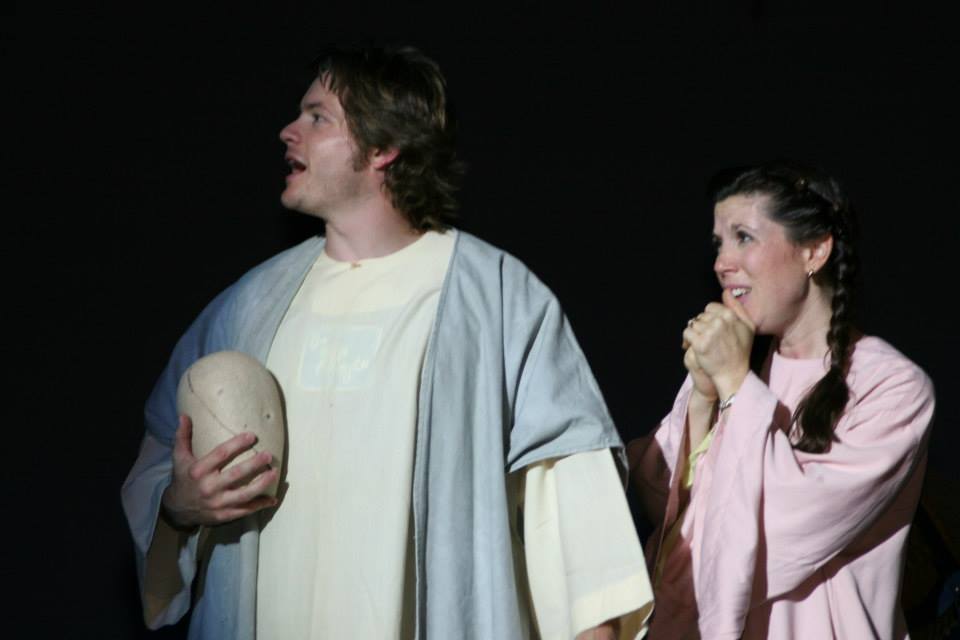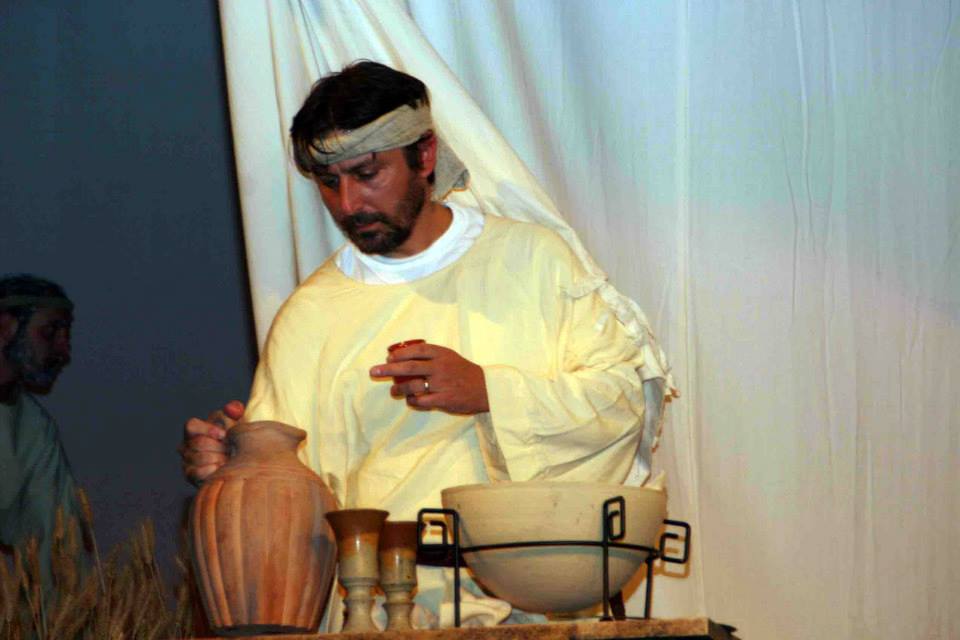Ruth
The classic biblical narrative of Ruth sings of love and redemptionDirector’s Notes on the “The Story of Ruth”
When Ben Franklin was in Paris he would often converse with members of the ‘Infidels’ Club’, a group of philosophers who spurned the Bible. These intellectuals spent much of their time searching for and discussing masterpieces of literature and art. For his amusement, Ben Franklin announced that he found an ancient manuscript worthy of their consideration. “We must hear it!” they exclaimed.
According to the Bible, women play an important role in the redemptive history of humankind. Two books in the Tanach are named after women: Esther and Ruth. Whereas Esther was a Hebrew woman who married a Gentile king, Ruth was a Gentile who married a Hebrew. Both women played strategic roles in the history of the people of Israel and their ultimate redemption. Esther helped to preserve her people from destruction and Ruth helped to perpetuate the stricken line of Elimelech (meaning, “my God is king”). She becomes the great grandmother of King David and thereby the ancestor of the Messiah. Her response to the revelation of the covenant keeping God of Israel impacts history. In this regard she is an inspiring example to us.
Read More
A lot happens in the first five verses of The Book of Ruth. A family leaves Bethlehem Judah in search of sustenance. The husband dies, leaving his widow and two sons in a strange land of spiritual darkness. The two sons die and the woman and daughters-in-law face a crossroads. The question is raised, what do we do when we are standing at the crossroads of life? What do we do when the bottom falls out and we find that our lives need to be rebuilt and redirected? What are the short-term and long-term consequences of our decisions to care for those we love? How do these choices impact our stories and history itself?
The intention of New Life Fine Arts’ production has been to be faithful to the original text yet tell the story in a way that those who are not familiar with some of the component social dynamics, customs and conflicts, might be able to understand its message. For the purpose of explaining the role of kinsman-redeemer (Leviticus 25:25) and levirate marriage (Deuteronomy 25:5-10), we invented the character of Shalisha. For the purpose of contrasting the various feelings held towards foreigners we filled in the blanks of the Biblical text and made Boaz a widower with two sons. Each son has a different attitude and understanding of how foreigners are to be treated.
Many scholars believe that The Book of Judges and Megillat Ruth were written by the same author, the prophet Samuel. They were often bound together as a single book or scroll. The author discloses that he was recording events that took place when the judges ruled, BEFORE there was a king in Israel.1 The author establishes himself as living at a time when Israel had a king. Yet in The Book of Ruth, when David is mentioned, he is referred simply as ‘David’ without any reference to his monarchy.2 The assumption is made therefore that the book was written after King Saul had been disqualified due to his disregard for the rule of God. In the meantime, Samuel had been directed by God to privately anoint Ruth’s great grandson, David, a man of God’s own choosing, to unite God’s people in righteousness.
The judgment of the law exposes our human inadequacy. The mercy of the law exposes divine sufficiency (Jeremiah 31:31). The New Covenant makes us more than adequate ministers through a Redeemer who lays down his life on the threshing floor of Judgment where our sins are sifted and removed from God’s view. By virtue of our faith-union with God’s appointed Kinsman-Redeemer, we become partakers of His life.
“In those days Israel had no king; everyone did as he saw fit.” (Judges 21:25 NIV)
“Obed, the father of Jesse, and Jesse the father of David.” (Ruth 4:22 NIV)
Ruth’s betrothal to Boaz took place during the season of harvest. Tradition also associates the Firstfruits of harvest with the birth of David.
“Salmon the father of Boaz, whose mother was Rahab, Boaz the father of Obed, whose mother was Ruth, Obed the father of Jesse,” (Matthew 1:5 NIV)
“The Levites did as Moses commanded, and that day about three thousand of the people died.” (Exodus 32:28 NIV)
“Those who accepted his message were baptized, and about three thousand were added to their number that day.” (Acts 2:41 NIV)
In this production we follow what is suggested in the midrash (the ancient Hebrew commentary on the law and prophets and sacred writings) of the prophet Samuel’s authorship of The Book of Ruth.
One interpretation is that The Book of Ruth was written to prepare people to receive David, from Bethlehem Judah, as God’s chosen King over King Saul. The Book of Ruth is read annually by orthodox Jews on ‘Shavuot’, ‘The Feast of Pentecost’, known also as ‘The Feast of Weeks’. This is celebrated on the day after the seventh Sabbath following the Pesach celebration of the first fruits of the harvest. ‘Shavuot’ represents the bringing to full fruition what was initiated at Pesach (Passover).
God brought His people out of bondage at Passover in order to bring them into a fruitful union with Himself at Pentecost. On Passover, the Israelites had to eat unleavened bread in haste. There was no time for the bread to rise. On the day of Pentecost, the priest lifts up two loaves baked with leaven as a wave offering, an offering representing in God’s sight the ultimate harvest that will follow (Leviticus 23:16-22). Some see these two loaves as symbolic of the complete harvest of what was sown at Passover – the culmination of God’s work in the redemption of both Jews and Gentiles.
In the context of introducing the Feast of Pentecost, Moses recorded the admonition for all reapers to leave fruit un-harvested so that others can freely glean the good of what God has done: “When you reap the harvest of your land, do not reap to the very edges of your field or gather the gleanings of your harvest. Leave them for the poor and alien. I am the LORD your God.” (Leviticus 23:22 NIV)
At Shavuot, the giving of the Law at Mount Sinai is also commemorated. The details of the covenant relationship with a holy God are spelled out in a sacred contract of commandments. The law of God is the Kettubah, the wedding contract God made with Israel upon taking her as His bride and leading her out of her place of bondage into the Promised Land.
Ruth beautifully pictures how a Gentile also said ‘Yes’ to God’s wedding contract and was led from her own bondage and wilderness experience into the covenant relationship with the God of Israel through His provision of a kinsman redeemer. Ruth marries Boaz, meaning ‘in him is strength’, indicating his ability to redeem and restore. As a result, her barrenness is turned to fruitfulness and she becomes the ancestor of King David and ultimately the promised ‘son of David’, the Messiah.3
At the first Pentecost (when Moses gave the commandments to Israel) 3,000 died as a result of disobedience to the message.4 At the Feast of Pentecost, celebrated in Jerusalem years later as recorded in the second chapter of The Book of Acts, 3,000 were saved as a result of their obedience to the good news of a ‘kinsman redeemer’.5











